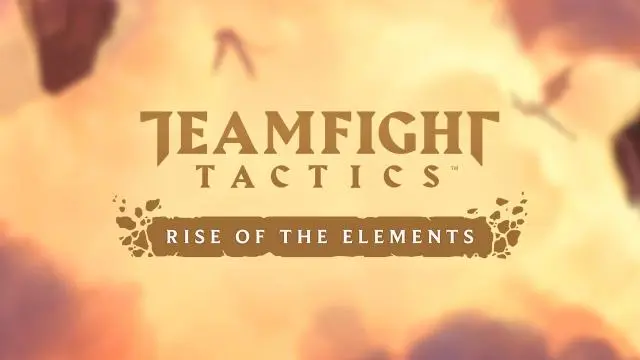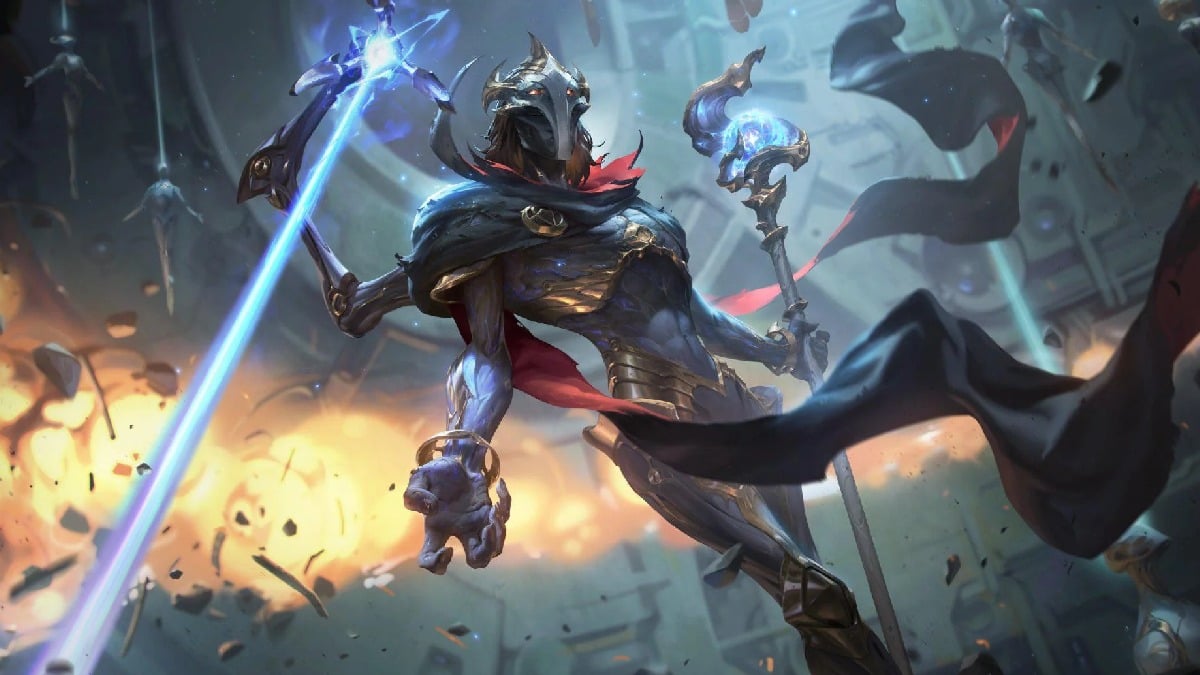Teamfight Tactics’ Set Two: Rise of the Elements was released with Patch 9.22 on Nov. 6 and introduced a new set of classes and origins.
Since its release, Rise of the Elements has received five updates. Following Patch 10.3, which was released on Feb. 5, the game is in a healthy spot where different strategies are equally viable and strong. But even in this state of equality and fairness, some TFT classes are superior to the others.
Here’s our TFT class tier list that takes into consideration the effectiveness, strength, and flexibility of each class.
Tier S
The top of this list features the classes that are still prevalent regardless of the meta. These classes are a solid core for any composition and allow players to build around them.
Ranger
Rangers became popular in recent patches and are some of the best carries in the game. Rangers have a low breakpoint (two units), which makes it easier to compete in the early rounds. Each Ranger offers a broad range of opportunities. Whether you combine Rangers with Wardens or go with a Poison composition, Rangers are flexible units.
Rangers are optimal carries as long as they have a decent frontline and good items. The priority items for Ranger units are those that provide attack speed, like Statikk Shiv and Guinsoo’s Rageblade. You can never go wrong with a Recurve Bow item when you’re playing a Ranger composition.
Predator
Before season 10, Predator was one of the most popular compositions in the game. Executing enemies is just too satisfying.
Although Predators are good at the early levels, they need to fit some conditions once the game transitions into the late rounds. Players must get a three-star Kog’Maw as soon as possible, for example. In Patch 10.3, Kog’Maw got a small buff, so it’s a worthwhile investment.
Because Predators have different secondary traits, the players can go for the option that’s most effective on the board: Poison to slow down those pesky Mages, Steel for immunity, Glacial for extra crowd control, or Crystal to deny damage.
Most players have moved on and are opting for other compositions. But Predators are still good and almost guarantee a top-four finish if you play your units right.
Summoner
We’ve all been in a scenario like this. It’s the end of the round, one-vs-one. You believe your unit can do it and you put your faith in that champion, only to watch it get slapped in the face by Tibbers.
Summoners are the most underrated units in the game. Players don’t think much of it, even when they keep getting snipped by Zyra’s plants.
The best thing about Summoners, besides the extra units, is that there isn’t one right path. Summoners, much like Predators and Rangers, are flexible. Whether you choose to go with Inferno, Shadow, Desert, and even Assassin, Summoners are a good core for any composition. These units aren’t entirely meta-dependent. Some units are stronger than others at certain points, but in general, Summoners are good.
Stop ignoring that Zyra that keeps showing up. She can be a game-changer if you give her a chance.
Mage
Putting Mages in the top tier might be a controversial decision, but it’s a necessary one. Mages aren’t as flexible as the previous classes. There are only a couple of possible paths for these units. Another problem is that Mages can be directly countered through items and Mystic units.
Even though Mages aren’t perfect, these units have remained relevant since the release of Rise of the Elements in November.
The meta in TFT follows the same path. One composition is extremely strong and easy to abuse. Next patch, it gets nerfed into oblivion and players move on to the next overpowered idea.
Mage units don’t get targeted in the patches because they’re in a healthy spot, however. That means Mages are good but not the stuff of nightmares that can’t be stopped.
Tier A
In the middle of this list, we have the classes that are either meta-dependent or not good enough on their own.
Berserker
There’s a time and place for a Berserker composition. While a two-star Olaf with Guinsoo’s Rageblade and Bloodthirster sounds like the perfect carry, it needs more help. Berserker units can take a punch and hit back. The AoE damage comes in handy when the enemy units just group up. The problem is that long term, Berserkers need additional units to make the composition relevant.
Warden
Wardens are the unsung heroes of TFT. These units are the most reliable frontline any composition could ask for. Criminally underrated and unappreciated, Wardens are only taken into consideration when you need to protect your carries. But that’s their job and they do it like no one else.
Wardens have a strong synergy with Rangers, but also with Glacial and Inferno. Nautilus and Thresh are a double trait—you get Wardens and Ocean. The main issue with Wardens is the lack of reliable damage and the fact that they’re useless against magic-heavy compositions.
Assassin
Assassin was all the rage in set one. But when set two hit the servers, Assassins fell off the priority list, despite being identical to their set one brothers and sisters. Getting three assassins is good, but getting more is just a waste of money.
These units can do some damage, but they aren’t a game-winning composition. Even after some buffs, Assassins aren’t completely reliable and require some good back up to work out.
Blademaster
This is another class inherited from set one that isn’t having the same success as its predecessor. The blender meta, turning Nocturne into a Blademaster, put this class back on everyone’s radar. After many frustrating weeks of watching Nocturne spin out of control, it was nerfed and the meta was effectively killed. The game also nerfed Sivir, the only Blademaster with the potential to hard carry.
Blademasters aren’t completely useless, but this isn’t the composition players should use if they want to finish in the top four.
Tier B
The lower tier features the TFT classes that can’t carry on their own, are difficult to obtain, or are item-dependent.
Druid
Druids are a good early-game class because most players lack any burst damage at that point and the sustain is enough. Druid units decay overtime because the enemies can go for items that deny healing, like Morellonomicon. Another fact against Druids is that the trait only works on Druid units, so they aren’t doing much for the team.
At some point, Druid-Woodland was a viable composition, but only if it met certain conditions. Players had to get the units to three stars and get good carries. Druids aren’t carries, but rather a glorified frontline with some sustain. Instead of investing gold in a three-star Ivern, consider going for something else and putting all that gold on a real carry.
Avatar
The right Lux can take any composition to the next level and completely change the game. The issue is that players require an outstanding level of luck or too much gold to high-roll and find the perfect Lux. There are no guarantees. Players might burn their economy to the ground to get the Lux and still lose the game.
Lux is good under very specific circumstances and those are few and far between. Players can’t even count on Lux to show up, so it’s best to not consider her as part of the ideal final composition. It’s one of those units that might not even be worth pursuing.
If you find it, get it. If not, don’t even worry about it.
Alchemist
Singed only works when it’s paired up with Poison units. Before the spatula was removed from the carousel, players used to turn Singed into an Inferno and watch as he set the board on fire. That option is no longer viable, so the situations where Singed works were reduced.
Singed also requires items to be effective. Overall, this unit requires too much work and the payback isn’t good enough to justify the effort.
Mystic
Mystic is the support class in TFT. It’s situational, only used to counter magic-heavy compositions. Mystic units aren’t carries or a frontline. They’re there for utility. Nami is the only unit in this class that can carry a game, but she requires items to do so.
Mystics are there when you need them and that’s about it.
Soulbound
The Soulbound class is a good duo to carry a game. The common technique is to put Lucian in the front so he dies early and protect Senna so Lucian can shoot everyone. This duo fits into two specific compositions, whether it’s Shadow to enhance Senna or Light to help Lucian. The only downside is that both Lucian and Senna require items to be optimal.
In the current state of the game, Soulbound is viable and a good alternative to the most mainstream compositions.






Published: Feb 12, 2020 04:22 pm